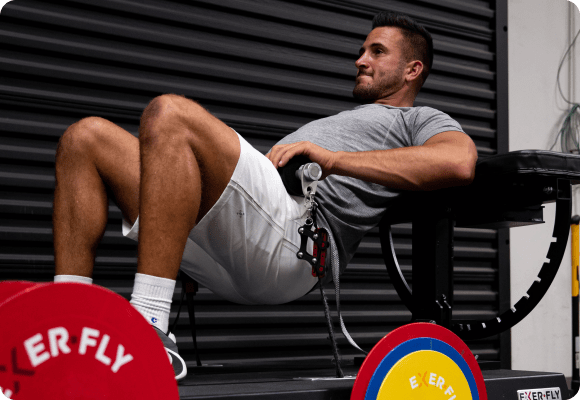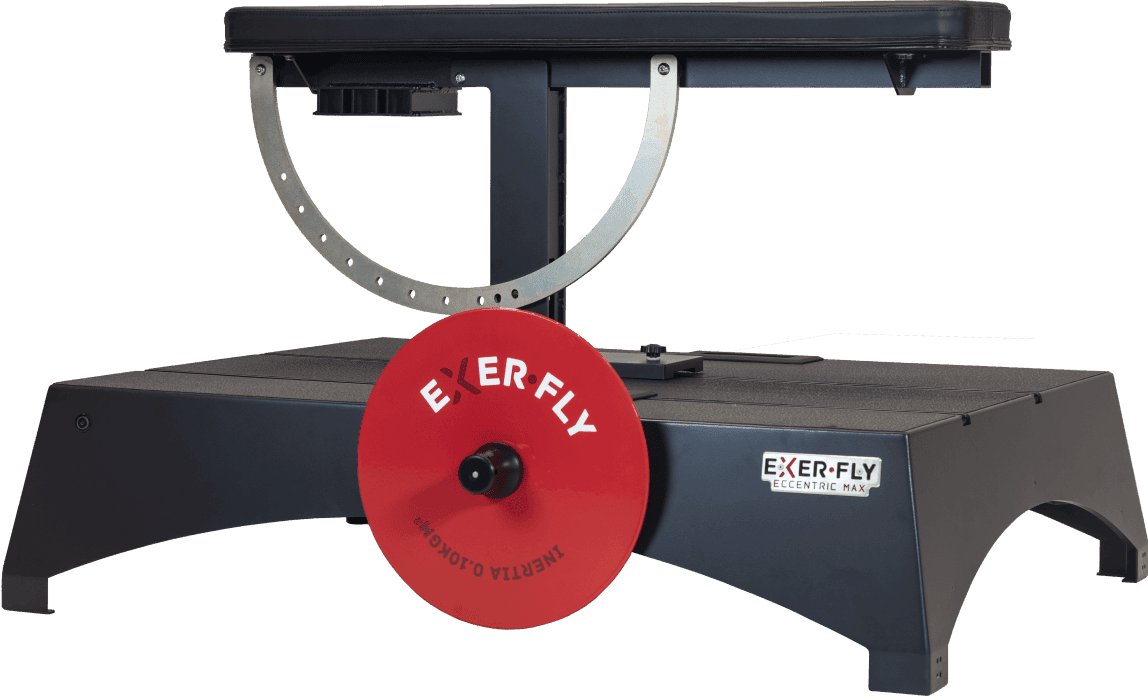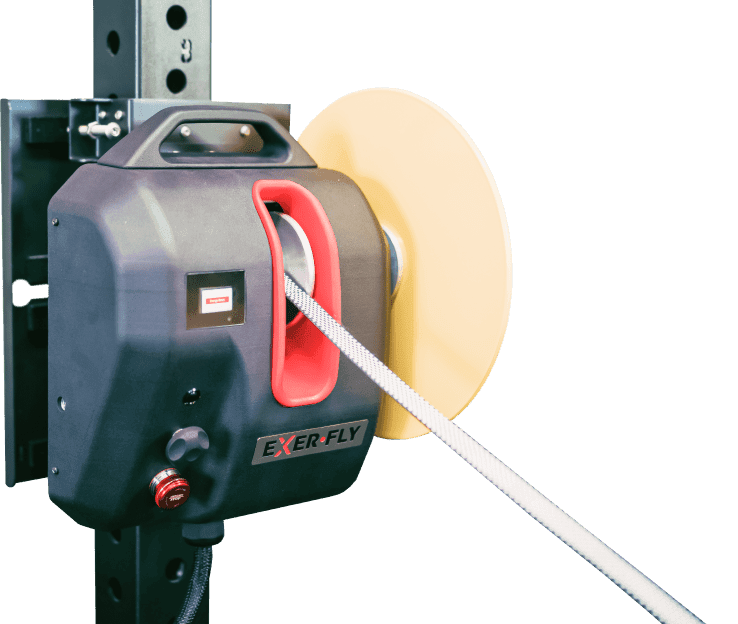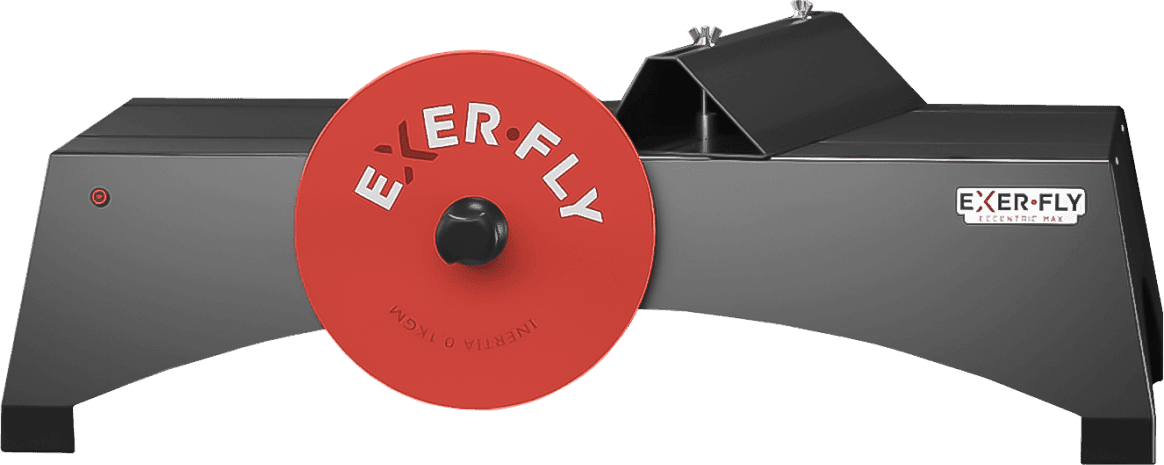
Eccentric Glute Exercises: Athletic Performance Benefits
Professor Erling Asmussen introduced the concept of eccentric lengthening of a muscle. It was referred to as "excentric," a muscle contraction moving away from the center. The first implementation of eccentric-based training was devised through a study by Bud Abbot, Brenda Bigland, and Murdoch Ritchie (Abbott et al., 1952).
The study consisted of two stationary cycle ergometers using a single chain. As one subject pedaled forward, the other cyclist resisted this forward motion by breaking the backward-moving pedals.
This cycling style demanded similar internal resistance from each cyclist, yet the individual applying deceleration had a much easier task than the cyclist pedaling concentrically. Demonstrating that a small amount of added resistance eccentrically will substantially affect the concentric output.
Eccentric exercises are an increasingly popular and effective training method utilized by various trainers and athletes. Eccentric exercises emphasize muscular control and enhance strength gains. What are eccentric exercises?
Most human movements can be broken down into the eccentric (downward) and concentric (upward) phases. Throughout the eccentric portion of the movement, we are putting our tissues in a lengthened state.
For example, while executing a hip hinge, the gluteus and hamstring muscles act eccentrically and are lengthened.
"When compared to concentric movements, eccentric actions yield greater force levels with concomitant lower neuromuscular activation levels." (Isner-Horobeti et al., 2013, p.43).
Muscles can produce far greater force while in the eccentric state than concentrically. It is then essential to overload the eccentric phase of a lift to induce further stimulus. One group of muscles that could greatly benefit from eccentric exercises are the glutes.
Why Eccentrically Load The Glutes
When it comes to athletic performance, maximizing the use of your gluteus muscles is a top priority. This is because the gluteus maximus is the primary muscle facilitating hip extension. Hip extension occurs when performing movements such as jumping, running, swimming, etc.
On top of accelerating and moving our body, the glutes are the main contributor to deceleration. The ability and skill of de-accelerating your body must be accomplished by the proper muscle groups.
When it comes to athleticism and performance, the quicker and more efficiently we can decelerate - in movements such as jumping or sprinting - the faster we can get into our next action. Training with emphasis on the eccentric portion of hip-hinging movements will allow your body to adapt to such demands.
Eccentrically overloaded training enhances many aspects of exercise and creates responses that are much tougher or impossible to achieve normally. The physiological and neural adaptation to eccentrically overloaded movements is far greater than regular concentric and eccentric movements.
"Eccentric exercise-induced adaptations include muscle hypertrophy, increased cortical activity, and changes in motor unit behavior, all of which contribute to improved muscle function” (Deborah Falla, 2022, pg. 54).
How To Perform Eccentric Glute Exercises With The Flywheel
Training for eccentric loading of our glutes is made easy when utilizing the Exerfly. When performing hinging movements on the Exerfly, the positioning and line of pull are two things that make this device so effective and easy to use.
The harness you wear while using the device comes equipped with conveniently located rings to attach the flywheel. The rings place the pull line directly in our body's midline, encouraging symmetry and setting you up for success.
This load displaces the weight similarly to having a barbell on your back without the need to load axially. Training in this fashion allows us to overload our glutes while keeping our spine out of the equation. In addition to being placed in a biomechanically advantageous position, using the flywheel introduces variable resistance training.
"Variable resistance training (VRT) methods improve the rate of force development, coordination between antagonist and synergist muscles; the recruitment of motor units." (Soria-Gila, Miguel A, et al., 2015, p. 3260).
Variable resistance training and eccentric load training are applicable across all fields of athleticism.
Eccentric Glute Exercises
Applying these training principles is made easy with Exerfly. You can do various movements, each targeting a different muscle group with varying intent. A bilateral squat is one of my favorite and, in my opinion, the most simplistic.
The squat movement on the Exerfly demands and enforces eccentric control. With an overloaded downward phase, you're left with a feeling of explosiveness. Training styles can be tailored towards your individual goals and emphasize muscular hypertrophy, strength, and endurance.
Unilateral training is an often overlooked exercise that greatly corrects asymmetries and increases athletic performance. Several variations of single-leg training can be accomplished on the Exerfly.
A split squat movement will instantly multiply one leg's demand for force and power. Athletes tend to get stuck in the habit of sagittal training. While there is good reason and a lot of work you can do in this plane of movement, we aren't always moving in a straight line during sport or activity.
Introducing our bodies to a frontal plane movement is a great way to ensure your training remains aligned with your goals and maintains good carry-over to your sport or activity. You can easily execute a lateral squat on the Exerfly!
References
- Isner-Horobeti, M.-E., Dufour, S. P., Vautravers, P., Geny, B., Coudeyre, E., & Richard, R. (2013). Eccentric exercise training: Modalities, applications, and Perspectives. Sports Medicine, 43(6), 483–512. https://doi.org/10.1007/s40279-013-0052-y
- Soria-Gila, M. A., Chirosa, I. J., Bautista, I. J., Baena, S., & Chirosa, L. J. (2015). Effects of variable resistance training on maximal strength. Journal of Strength and Conditioning Research, 29(11), 3260–3270. https://doi.org/10.1519/jsc.0000000000000971
- Hindawi, D. F. (n.d.). Physiological and neural adaptations to eccentric exercise: Mechanisms and considerations for training. Physiological and Neural Adaptations to Eccentric Exercise: Mechanisms and Considerations for Training. Retrieved September 19, 2022, from https://www.hindawi.com/journals/bmri/2015/193741/
- Elmer, S. J., & LaStayo, P. C. (2014, July 15). Revisiting the positive aspects of negative work. The Company of Biologists. Retrieved September 20, 2022, from https://journals.biologists.com/jeb/article/217/14/2434/12114/Revisiting-the-positive-aspects-of-negative-work






